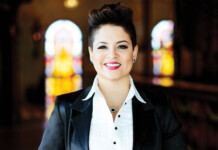 The History of Black History Month
The History of Black History Month
Black History Month is observed every February to commemorate the important people and momentous events in African-American history. It was first conceptualized by the Association for the Study of Negro Life and History as “Negro History Week” in 1926. Observed on the second week in February, it was supported by the departments of education of three states and city school boards in two major American cities. Despite minuscule initial public support, the Association believed observance of the week could grow and educate others in the process, so Negro History Week was celebrated again in 1927 and every year thereafter until the 1970s. In just four years, nearly every state with sizable black populations celebrated Negro History Week.
The Black Student Union at Kent State University in Ohio was responsible for turning Negro History Week into what we now know as Black History Month. The Union first proposed the entire month of February as Black History Month in 1969, and was first celebrated the next year. The U.S. government recognized February as Black History Month for the first time in  1976.
1976.
African-Americans made up 12 percent of the U.S. population in 2012, the last year census figures were adjusted. According to a 2012 Gallup poll, 4.6 percent of African-Americans identify as either lesbian, gay, bisexual or transgender, meaning African-Americans who self-identified as LGBT numbered approximately 1.73 million.
Hotspots honors Black History Month by profiling black LGBT people who have made noteworthy achievements in their personal or professional lives. One person will be profiled each week.
Jason Collins
 Jason Collins was born in Los Angeles, California on December 2, 1978. He made headlines around the world on April 29, 2013 when a cover story with Sports Illustrated was published, detailing his coming out of the closet. Collins became the first professional men’s basketball player in North America to come out and live openly as a gay man.
Jason Collins was born in Los Angeles, California on December 2, 1978. He made headlines around the world on April 29, 2013 when a cover story with Sports Illustrated was published, detailing his coming out of the closet. Collins became the first professional men’s basketball player in North America to come out and live openly as a gay man.
Collins grew up in the neighborhood of Northridge with his twin brother Jarron. Both Jason and Jarron would end up playing in the NBA. They graduated together from the Harvard-Westlake School; a classmate of theirs was “How I Met Your Mother” actor Jason Segel. Both brothers attended Stanford University and played on the basketball team together as they had in high school. In 2001, his final year at Stanford, Jason Collins was an All-Pac-10 and an All-American team athlete.
Jason Collins was a first-round pick in the 2001 NBA draft, and played eight seasons for the New Jersey Nets. Collins played a key role in the Nets making it to the NBA Finals for the first time ever (the 2001-02 season). He would return to the Finals with the Nets the next year as well.
In 2008, Collins was traded to the Memphis Grizzlies. Among the many squads he played on over the next five years, he spent the longest time with the Atlanta Hawks (three seasons, 2009-12). When he came out, he was playing for the Washington Wizards, but he became a free agent in July 2013 and was actively seeking a new contract with another team.
Collins had previously been in a relationship for many years to a woman, WNBA player Carolyn Moos. At one time engaged to be married, Collins was the one to call off the wedding. Moos had only learned of Collins’ sexuality shortly before the Sports Illustrated cover story came out in 2013. Now that he has come out in a public manner, Collins wishes that the media respect boundaries and not ask too many invasive questions about his personal life. He did volunteer that he was not dating anyone, nor was he looking at this time. In the Sports Illustrated story, he revealed that he chose his jersey number, 98, in honor of Matthew Shepard, who died after a brutal anti-gay beating in 1998.














